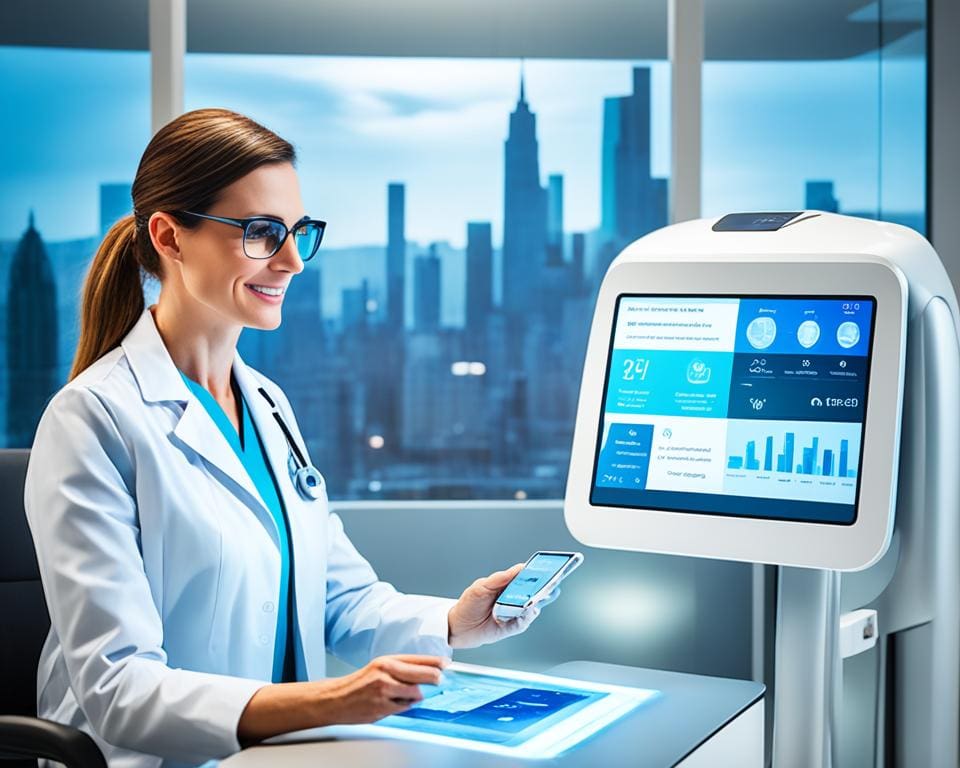As we navigate through unprecedented times, we stand on the brink of a revolutionary change in how healthcare is delivered. Telemedicine symbolizes a new era in healthcare, offering a seamless integration of technology and medical services. This transformation enables virtual doctor consultations and remote care, significantly enhancing patient access and improving outcomes.
The telemedicine benefits became increasingly evident during the COVID-19 pandemic, prompting both patients and healthcare providers to turn towards digital healthcare solutions as a crucial lifeline. This shift not only fostered greater accessibility but also paved the way for a more responsive and flexible healthcare system. Our journey into the world of telemedicine is just beginning, and ongoing advancements continue to shape the future landscape of healthcare delivery.
Understanding Telemedicine and Its Importance
Telemedicine represents a transformative approach to healthcare, allowing patients to access services remotely through advanced technologies. This innovative method not only enhances the way healthcare is delivered but also makes it more accessible, particularly for individuals in underserved areas.
What is Telemedicine?
Telemedicine refers to the remote delivery of healthcare services, enabling virtual doctor consultations and medical advice through telecommunications technology. Patients can now connect with healthcare professionals without the need for a physical visit, which streamlines the healthcare experience. This flexibility supports patients in managing their health efficiently from the comfort of their homes.
Key Components of Telehealth Services
Several key components contribute to effective telehealth services:
- Electronic Health Records (EHRs): These digital records facilitate seamless information sharing between healthcare providers, ensuring comprehensive patient care.
- Mobile Health Applications: These apps empower patients to monitor their health metrics, schedule appointments, and communicate with providers at their convenience.
- Secure Patient-Provider Communication Platforms: These channels ensure that exchanges between patients and providers remain confidential and protected from unauthorized access.
The Role of Remote Healthcare Technology
Remote healthcare technology plays a crucial role in enhancing patient care. Video conferencing tools, for instance, enable real-time virtual consultations that maintain a personal touch in healthcare delivery. Telemonitoring devices track vital health data, providing valuable insights that help healthcare professionals make informed decisions. With telemedicine advancements, patients in rural areas can receive timely care that was previously limited by geographical barriers.

The Rise of Telemedicine: A New Era in Healthcare
The evolution of telemedicine is an inspiring journey that reflects the remarkable adaptability of healthcare in response to technological advancements. It began with basic telephonic consultations, marking the inception of remote healthcare. This initial phase laid the groundwork for what is now a sophisticated, multifaceted system designed to meet the needs of patients across the United States. As technology progressed, the digital healthcare solutions available have transformed both patient experience and clinical practice.
Historical Perspective on Telemedicine
Telemedicine’s roots can be traced back several decades when healthcare providers utilized telephone communication for consultations. While this was a significant step forward, the real transformation occurred with the integration of the internet and mobile technology. These developments enabled healthcare professionals to offer real-time video consultations, remote monitoring, and more interactive patient engagement methods. This historical context is fundamental to understanding how far the industry has come, paving the way for current trends in telemedicine advancements.
Current Trends in Telemedicine Advancements
In the present landscape, telemedicine benefits are becoming increasingly pronounced. Notable advancements include the growing utilization of artificial intelligence in telehealth, which enhances diagnostic accuracy, and improved cybersecurity measures that ensure patient data safety. Furthermore, the integration of wearable technology allows for the continuous tracking of patient health metrics, facilitating timely interventions. These trends collectively contribute to a more efficient healthcare system, improving access and outcomes for patients nationwide.









